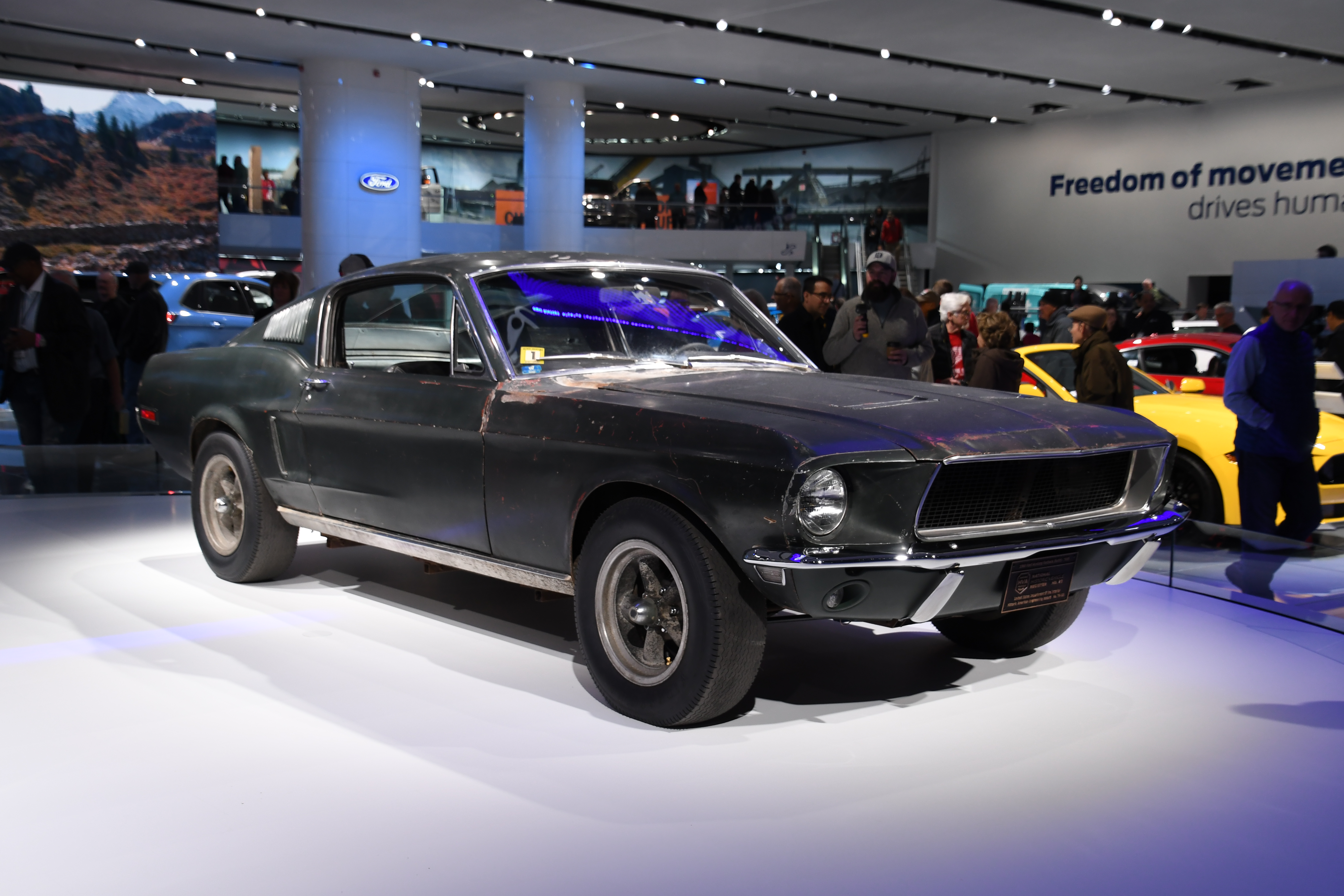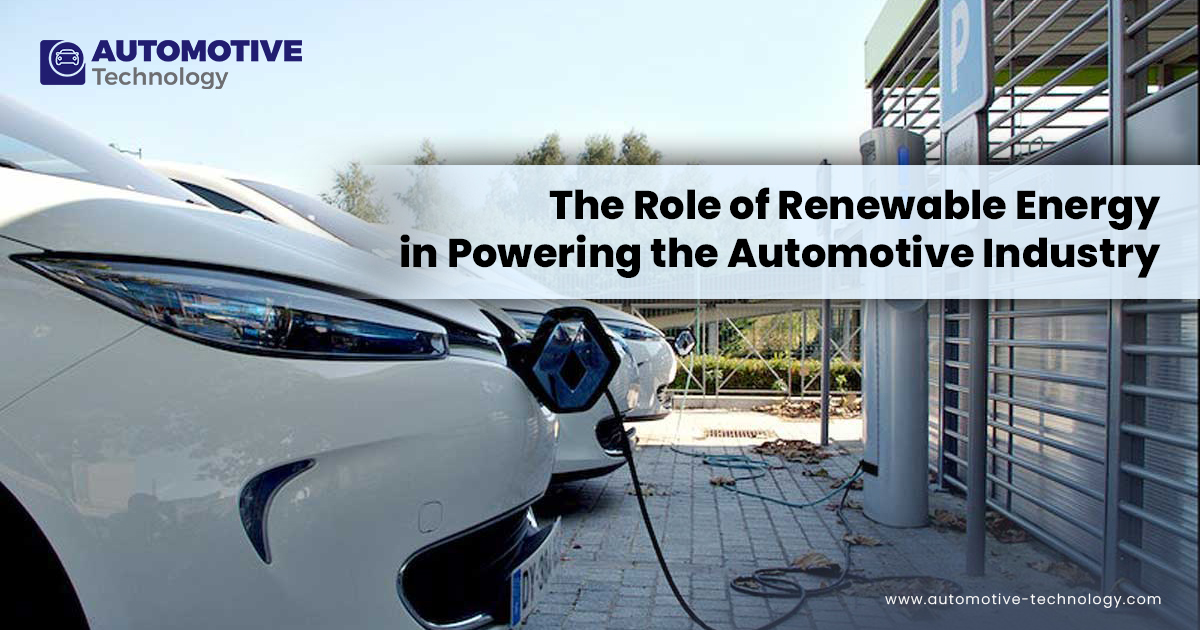
The automotive industry is currently navigating a pivotal transformation, moving beyond the initial “early adopter” phase of electric vehicles. We are entering an era where EVs need to be genuinely practical and accessible for everyday individuals with regular budgets, marking a fundamental shift in how manufacturers conceptualize and construct vehicles. This period, particularly leading up to and including 2026, promises an exciting convergence of advanced battery technology, audacious design philosophies, and substantial investment from established legacy brands, signaling a future that is not just iterative but truly revolutionary.
Simultaneously, the march toward greater autonomy continues to accelerate, with automakers heavily investing in self-driving capabilities. Cars are becoming more connected than ever before, thanks to the rise of 5G and the Internet of Things (IoT). These foundational technologies are absolutely necessary for the rapid expansion of real-time data collection and processing systems, powering innovations like augmented reality head-up displays (AR-HUD) and advanced AI-powered driver-assist systems (ADAS).
It’s clear that the future is almost here, and it’s destined for significant transformations driven by environmentally-mindful technological advancements. Many of the most anticipated releases for next year and beyond are predominantly electrified cars, alongside the burgeoning fruits of concerted efforts towards autonomous driving. Let’s take a closer look at some of the vehicles and innovations that stand out for pushing the industry somewhere genuinely new, promising a future of sustainable abundance for all.

1. **Rivian R2 (2026)**
Rivian has already proven its mettle by building genuinely impressive electric vehicles in the R1T and R1S, earning acclaim for their capability and innovative design. However, these groundbreaking trucks and SUVs have come with a premium price tag, placing them out of reach for many everyday consumers. That’s precisely why the upcoming Rivian R2 is generating so much excitement and anticipation within the industry.
Set to begin deliveries in early 2026, the compact crossover R2 starts at a much more accessible $45,000. This pricing positions it as Rivian’s first serious foray into the mass-market segment, translating the company’s established philosophy of robust, capable EVs into a package designed for a broader audience. It’s a crucial step for the brand and exactly what the evolving EV market needs right now: high-quality electric vehicles that don’t break the bank.
Beyond its compelling price point, the R2 is designed to expand Rivian’s portfolio significantly, offering a more compact alternative to its larger R1 siblings. Drivers will have a range of powertrain options to choose from, including single-motor rear-wheel drive, dual-motor all-wheel drive, and even a potent tri-motor all-wheel drive configuration. This flexibility ensures that the R2 can cater to diverse driving preferences and needs, from efficiency to exhilarating performance.
Despite its smaller stature, the R2 will not compromise on performance, racing from 0 to 60 mph in less than 3 seconds when equipped with the appropriate powertrain. Equally important for consumer confidence, it’s slated to deliver at least 300 miles of range on a full charge, making it a highly practical option for daily commutes and longer journeys alike. Having debuted this year, its arrival in the first half of 2026 is keenly awaited, poised to make a significant impact on the mainstream EV landscape.

2. **Sony Honda Afeela 1 (2026)**
When an entertainment giant like Sony collaborates directly with an automotive titan such as Honda, the result is bound to be something truly extraordinary. The Afeela 1 sedan, slated for arrival in 2026, is a testament to this powerful partnership, promising a vehicle that blurs the lines between advanced mobility and immersive digital experience. This isn’t merely about licensing software; it’s a deep, synergistic collaboration aiming to redefine the in-car experience.
The Afeela 1 will feature an impressive suite of 40 sensors, meticulously integrated to feed its Level 2+ driver assistance system. This advanced sensor array is a clear indication that Sony Honda Mobility is serious about delivering cutting-edge technology and a robust foundation for future autonomous capabilities. Such a comprehensive sensing capability suggests a strong commitment to both safety and a highly intelligent driving environment, giving drivers greater peace of mind and assistance.
Stepping inside the Afeela 1 reveals an array of screens spanning across the dashboard, signaling a profound focus on in-cabin entertainment and connectivity. This design choice is where Sony’s expertise truly shines, promising a seamless and captivating user interface that integrates infotainment, navigation, and vehicle controls in a visually stunning and highly functional manner. The collaboration aims to leverage both companies’ core strengths: Honda’s automotive engineering prowess and Sony’s unparalleled mastery in entertainment and user interface design.
While “cutting-edge technology that draws on both companies’ expertise” might sound like standard marketing rhetoric, the sheer scale of the sensor suite and the evident emphasis on a rich digital environment strongly suggest that Sony Honda Mobility is committed to delivering on its promises. The Afeela 1 is poised to be more than just a car; it’s envisioned as a mobile entertainment hub and a highly capable driving machine, offering a glimpse into a future where vehicles are deeply integrated with our digital lives.

3. **Alfa Romeo Giulia EV (2026)**
Alfa Romeo has always been synonymous with passionate driving dynamics, exquisite Italian design, and a certain spirited flair that sets its vehicles apart. The upcoming electric Giulia, scheduled for a thorough update for the 2026 model year, is poised to take these core attributes and amplify them through electrification, rather than diluting them. This is an exciting prospect for enthusiasts and a bold statement from a brand historically celebrated for its internal combustion engines.
This electric iteration of the Giulia is set to feature rapid charging capabilities, an impressive range that will make it highly competitive in the premium EV segment, and high performance that truly lives up to the Alfa Romeo badge. The expectation is for models to produce an astounding 1,000 horsepower, a figure that would position it firmly in supercar territory. Even the base variant is anticipated to deliver a robust 345 horsepower, ensuring that every Giulia EV offers exhilarating performance.
The Giulia EV will retain its iconic fastback design, a beloved characteristic that aficionados will appreciate, but it will be thoroughly updated with more aggressive cues and a revised Trefoil front grille, blending tradition with a forward-looking aesthetic. Critically, the vehicle will ride on the Stellantis STLA Large architecture, a highly flexible platform designed to accommodate various powertrains and a wide range of cutting-edge technologies. This architecture’s adaptability is key to realizing the diverse performance levels and advanced features promised for the new Giulia.
For Alfa Romeo, the challenge and opportunity lie in nailing the intangibles: the weight distribution and the steering feel that are so crucial to the brand’s identity. If they succeed in preserving and enhancing these sensory aspects with an electric powertrain, the Giulia EV could well become the benchmark sports sedan, demonstrating to other premium brands exactly how to execute electrification properly. It’s an anticipated rebirth that promises to keep Alfa Romeo’s heart beating strongly in the electric era.
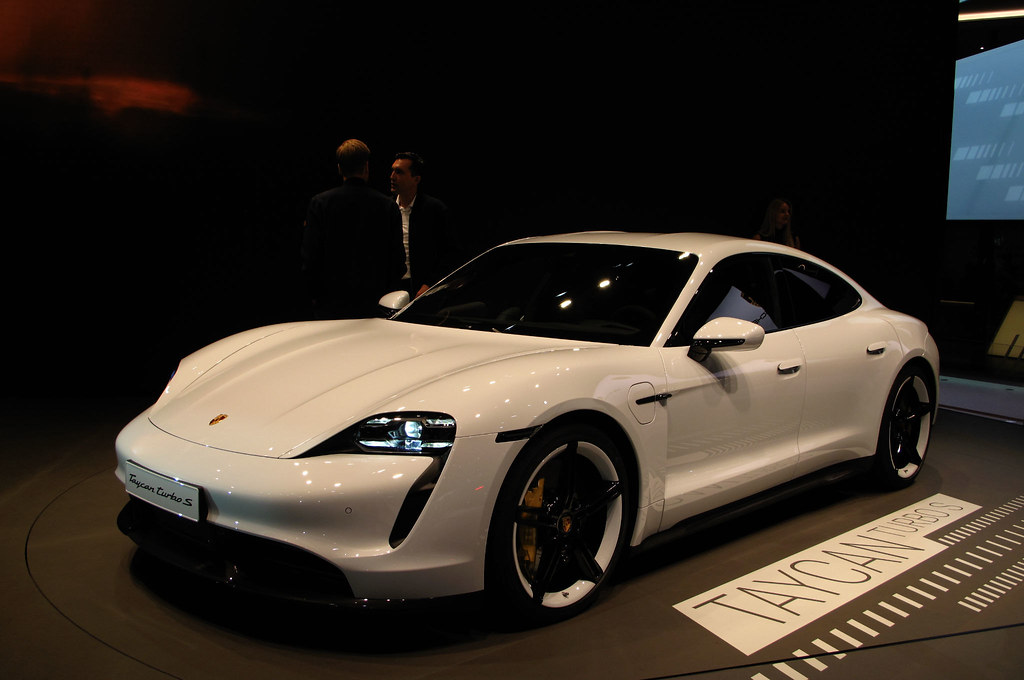
4. **Porsche 718 EV (2027)**
Porsche’s journey into full electrification continues to be meticulously planned, and the upcoming 718 EV, expected in 2027, marks a pivotal moment for the brand’s most accessible sports car. While official photos are yet to be released, spy shots of prototypes offer tantalizing glimpses, suggesting that the electric 718 will draw heavily on the design language established by the Taycan. Expect to see slim, horizontal headlights and smooth, sculpted lines, giving it a thoroughly modern yet unmistakably Porsche aesthetic.
Crucially, despite the contemporary design cues, the proportions of the 718 EV are expected to feel distinctly like a 718, subtly adapted for the electric era. This commitment to maintaining its classic sports car silhouette is vital for retaining its enthusiast base. The car will be built upon an all-new platform, meticulously optimized for an electric powertrain, ensuring it remains light and agile—hallmarks of the 718 experience. The standard configuration will feature a single motor and rear-wheel drive, promising that pure driving sensation Porsche owners cherish.
Porsche has demonstrated its careful approach by pushing the launch back at least once and continues to deliberate on its broader electric timeline. This cautious strategy underscores the significance of the 718 EV; it’s a model to watch closely as it navigates the transition. As the brand’s entry-level sports car, its shift to full electric power carries immense weight. The 718 EV could either spark considerable debate among purists or, much like the Cayenne SUV did two decades ago, fundamentally redefine what enthusiasts expect from the Porsche brand and, indeed, from sports cars in general.
This transition isn’t just about replacing an engine with a battery; it’s about proving that the essence of a Porsche sports car—its agility, precision, and visceral connection to the road—can not only endure but thrive in an electric format. The 718 EV is more than just a new model; it’s a statement about the future of performance driving and a potential game-changer for the entire automotive industry.

5. **Lucid Gravity (2026)**
Following the groundbreaking efficiency and luxury of its Air sedan, Lucid is set to expand its impressive electric vehicle lineup with its second offering: the 2026 Gravity SUV. This new vehicle builds on Lucid’s established reputation for exceptional engineering, bringing its highly efficient electric powertrains to a larger, more versatile format. The Gravity is poised to make a significant splash in the rapidly growing premium electric SUV market, combining spaciousness with remarkable range.
One of the most compelling features of the Gravity is its maximum estimated range of 450 miles per charge. This figure is not only genuinely competitive within the SUV segment but also highlights Lucid’s continued leadership in battery and powertrain efficiency. Achieving such a substantial range in an SUV, a vehicle type typically less aerodynamic and heavier than sedans, is a testament to the company’s advanced technological capabilities. For consumers, this translates to reduced range anxiety and greater practicality for longer journeys.
Inside, the Gravity promises an upscale cabin, reflecting Lucid’s commitment to luxury and refined design. Expect premium materials, sophisticated ergonomics, and an array of advanced technological features that create a comfortable and engaging environment for all occupants. This focus on interior quality ensures that the Gravity will compete effectively against established luxury brands, offering an experience that is both technologically advanced and exquisitely appointed.
Early signs are already positive, with the Gravity garnering favorable reviews from outlets such as Car and Driver, indicating its potential to meet high expectations. However, the ultimate success of the Gravity, and indeed Lucid as a whole, hinges on a critical question: can the company effectively scale its production and service infrastructure to match its ambitious engineering achievements? Delivering on both groundbreaking technology and robust manufacturing will be key to solidifying Lucid’s position as a major player in the luxury EV market.
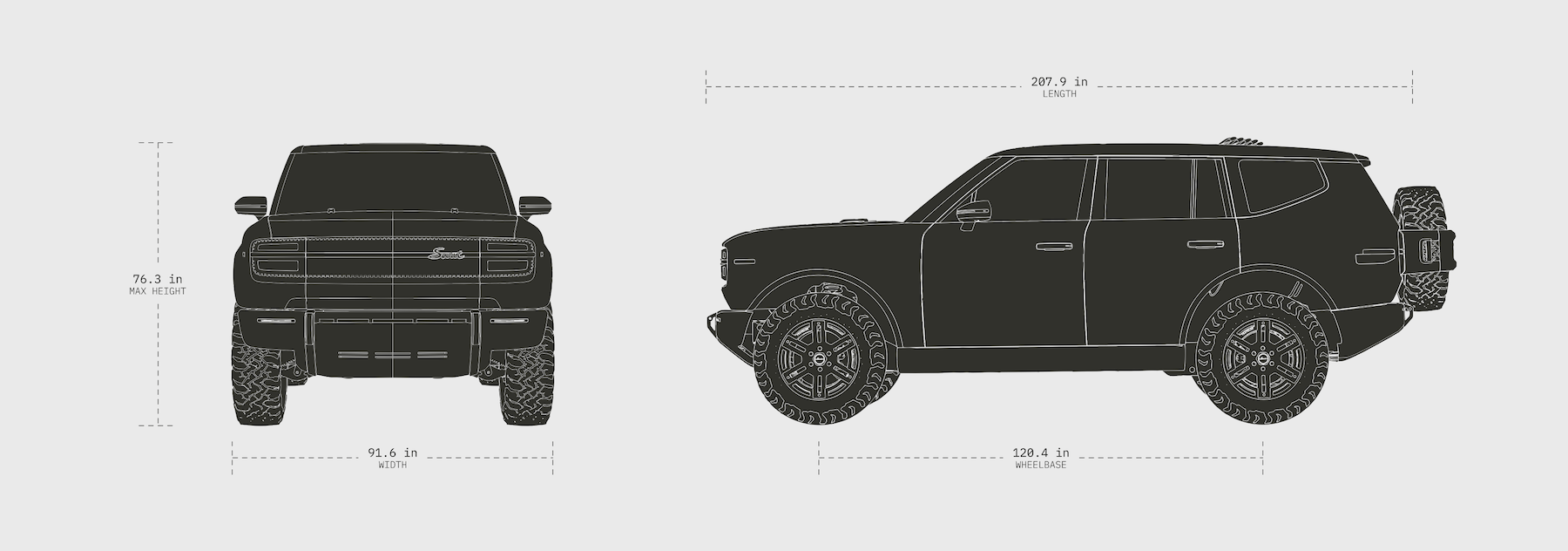
6. **Scout Terra and Traveler (2026-2027)**
Volkswagen is embarking on an exciting journey, reviving the iconic Scout brand as a dedicated “born-electric” venture, signaling a bold step into the rugged EV market. The upcoming Scout Terra and Traveler models, expected between 2026 and 2027, represent this new chapter, aiming to capture the spirit of adventure and utility that the original Scout vehicles were known for. What makes these models particularly noteworthy is their intelligent approach to addressing a common concern among potential EV buyers: range anxiety.
To tackle this head-on, the Scout models will be available with a gas-powered range extender. This innovative solution utilizes a small internal combustion engine purely as a generator, kicking in to charge the battery when needed, thus extending the total driving distance to an impressive 500 miles. This strategic design choice is smart because it provides the peace of mind of extended range without making the vehicles gas-dependent for propulsion. It allows for primarily electric driving while offering a crucial backup for long road trips or remote excursions where charging infrastructure might be scarce.
This approach caters directly to those hesitant about fully committing to an electric vehicle, offering a bridge to the EV future that combines environmental consciousness with practical convenience. By not solely relying on gas, the vehicles maintain their electric identity and benefits, while offering the flexibility of a traditional fuel source when required. It’s a pragmatic solution for the evolving market, especially for vehicles designed for adventurous use.
The Scout Terra and Traveler are explicitly meant to compete with formidable rivals like Rivian’s electric trucks in the off-road segment. With their robust, born-electric platform and the strategic inclusion of a range extender, this approach could very well succeed in carving out a significant niche. These vehicles aim to blend the environmental advantages of electrification with the rugged capability and extended usability demanded by off-road enthusiasts, creating a compelling new option for adventurers.

7. **Nissan LEAF (2026)**
Nissan holds a foundational place in the history of electric vehicles, having essentially invented the mainstream EV segment with the original LEAF. Now, for 2026, the company is embarking on a significant reinvention of this pioneering model, transforming the all-new LEAF into a small electric crossover SUV. This strategic pivot reflects a keen understanding of evolving consumer preferences, as crossovers have become the dominant vehicle type in many markets. Nissan is adapting the LEAF to meet what people are actually buying.
This redesigned 2026 LEAF will feature five-passenger seating, making it a practical choice for small families and urban dwellers alike. Crucially, it boasts a 303-mile range, which places it squarely in genuinely usable territory for most drivers. This substantial increase in range, combined with fast-charging capabilities, addresses one of the primary hurdles for wider EV adoption, making the new LEAF a much more viable and appealing option for everyday use and longer journeys.
The transition to a crossover body style is not just about aesthetics; it’s about functionality and market relevance. By moving into the popular crossover segment, Nissan positions the LEAF to attract a much larger pool of potential buyers who prioritize utility, ride height, and a more robust appearance. This move ensures that the LEAF remains competitive in a rapidly crowded EV market, appealing to practical considerations alongside its environmental benefits.
If Nissan can manage to price this new LEAF right, it has the potential to become a significant volume player in the electric vehicle market. Its combination of a popular body style, a highly competitive range, and the brand’s established legacy in electrification could make it a compelling proposition for consumers looking for an affordable yet capable electric crossover. The reinvention of the LEAF is a crucial step for Nissan to reassert its leadership and relevance in the mainstream EV landscape, promising a future where electric mobility is more accessible than ever.
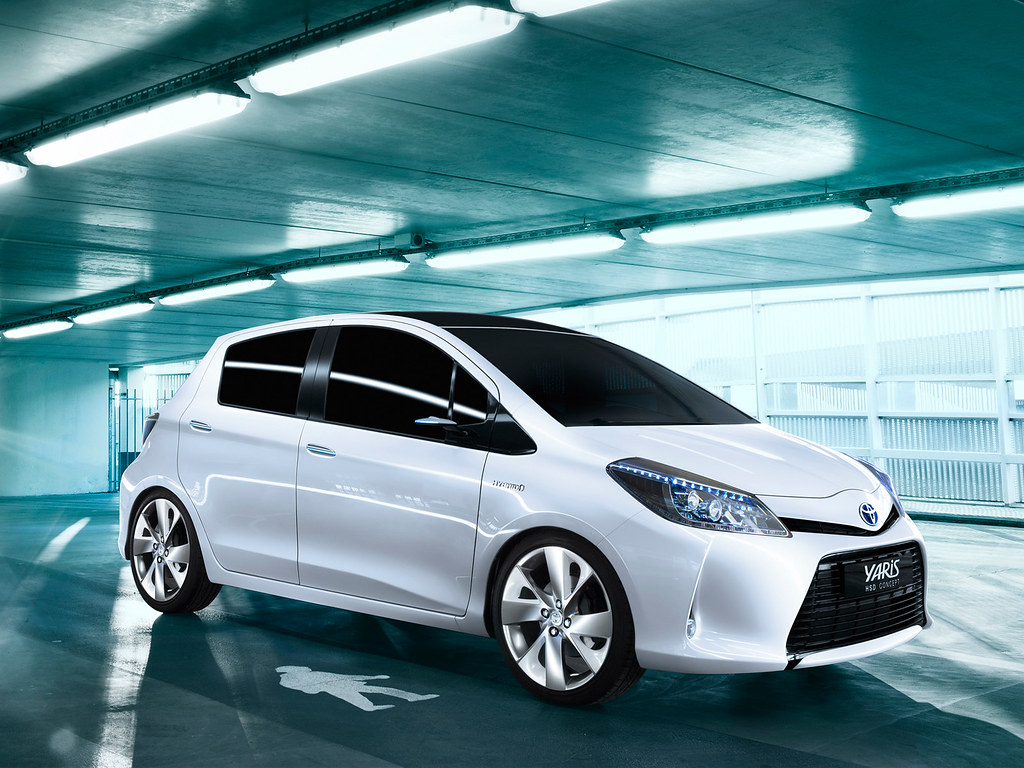
8. **Toyota Solid-State Battery EVs (2027-2028)**
Toyota is gearing up to make a significant leap in electric vehicle technology with its ambitious plans to launch the first all-solid-state battery-powered EV between 2027 and 2028. This move could truly redefine what consumers expect from an electric car, pushing beyond the capabilities of current lithium-ion technology. Solid-state batteries promise a trio of game-changing benefits: faster charging times, substantially longer driving ranges, and enhanced safety, addressing some of the most pressing concerns for potential EV adopters.
For years, Toyota has approached electrification with a methodical, almost cautious, strategy, focusing heavily on hybrids before fully embracing battery-electric vehicles. However, if they can deliver on solid-state batteries at scale, this deliberate pace could ultimately position them far ahead of the competition. Commercial production is slated to begin in the 2027-2028 timeframe, with mass production expected to follow around 2030 or later, suggesting a carefully planned rollout to ensure reliability and widespread availability.
The successful implementation of solid-state batteries at a consumer level could effectively leapfrog years of incremental improvements seen in conventional battery technology. This isn’t just about a slight bump in range; it’s about a fundamental shift that could make EVs even more convenient and appealing for everyday drivers. Imagine charging your car in minutes, driving hundreds of miles further, and having greater peace of mind regarding battery longevity and thermal management—that’s the promise of solid-state.
Should Toyota achieve this ambitious goal, it would not only cement its place as a leader in advanced automotive technology but also fundamentally accelerate the industry’s transition to electric power. The impact would extend beyond just performance metrics, enhancing the overall user experience and removing significant barriers to widespread EV adoption, making electric vehicles a practical choice for virtually everyone.

9. **Dodge Charger Daytona with Factorial Solid-State Battery (2026)**
While Toyota charts a long-term course for solid-state batteries, Stellantis, the parent company of Dodge, is taking a more immediate and tangible step. By 2026, they plan to launch a demonstration fleet of Dodge Charger Daytona EVs that will be fitted with Factorial’s 390 Wh/kg solid-state batteries. This is an exciting development because it moves solid-state technology from theoretical discussions into actual, real-world vehicle testing.
The significance of this demonstration fleet cannot be overstated. For well over a decade, the promise of solid-state batteries has been perpetually “five years away,” leading to considerable skepticism within the industry and among consumers. Seeing these advanced batteries integrated into actual Chargers, even in limited numbers, represents meaningful and concrete progress. It’s a vital step in validating the technology’s readiness for eventual mass production.
Factorial’s batteries, boasting a robust energy density of 390 Wh/kg, are central to this initiative. This level of energy density is crucial for performance-oriented vehicles like the Charger Daytona, ensuring that the transition to electric power doesn’t compromise the exhilarating performance that Dodge vehicles are known for. It’s about combining next-generation efficiency with the power and speed enthusiasts demand.
This trial run offers a crucial opportunity for Stellantis to gather invaluable real-world data on performance, durability, and safety under various driving conditions. It’s a pragmatic approach to de-risk the technology, paving the way for wider deployment. For consumers, it signals that the benefits of solid-state batteries – like potentially longer range and faster charging – are closer to becoming a reality in high-performance electric vehicles.

10. **Kia EV3 (2026)**
Kia has been making waves in automotive design and electric vehicle innovation, and the upcoming EV3, expected to launch in 2026, continues this impressive trend. The EV3 is set to be a significant player in the growing market for accessible electric options, offering sharp styling that aligns with Kia’s recent design language. It combines a visually appealing aesthetic with practical features, making it an enticing prospect for a broad consumer base.
What truly makes the EV3 a potential game-changer is its aggressive price point. With prices expected to start just under $35,000, and an EPA range projected to be around 270 miles, Kia is directly targeting the mainstream crossover market. This combination of an attractive price and a genuinely usable range positions the EV3 as a direct competitor to popular gas-powered crossovers, challenging the perception that EVs are always a premium purchase.
For many potential buyers, the 270-mile range is a sweet spot, providing ample distance for daily commutes and weekend trips without constant range anxiety. If Kia can indeed deliver on these promises, the EV3 could become a significant volume seller, appealing not just to environmentally conscious drivers but also to practical consumers looking for value and reliability. It transforms the conversation from merely environmental benefits to tangible economic and convenience advantages.
The EV3 is more than just another electric car; it represents Kia’s strategic move to democratize EV ownership. By offering a stylish, capable, and affordable electric crossover, Kia is accelerating the shift towards electric mobility for everyday people. This makes the EV3 one of the most anticipated releases, poised to expand the reach of electric vehicles into new segments of the market.
---Front-3869660-2560x1440.jpg)
11. **Mercedes CLA EV (2026-2027)**
Mercedes-Benz is signaling its serious commitment to electrification beyond its flagship models with the fully redesigned CLA compact sedan, expected to arrive between 2026 and 2027. This next-generation CLA will be offered in both all-electric and hybrid versions, providing consumers with a flexible pathway into premium electric mobility. The availability of rear-wheel or all-wheel drive for the electric variant further broadens its appeal, catering to diverse driving preferences.
The dual powertrain strategy—offering both electric and hybrid options—is a pragmatic acknowledgement that not every market or buyer is ready for a full transition to EVs just yet. This approach allows Mercedes-Benz to capture a wider audience, including those who are keen on electrification but desire the flexibility and peace of mind a hybrid powertrain can offer. It’s a smart way to facilitate the transition without alienating existing customer segments.
Introducing a compact EV sedan underscores Mercedes-Benz’s strategy to infuse its volume segments with advanced electric technology and luxury. This isn’t just about an exclusive offering; it’s about making sophisticated electric driving accessible within a more mainstream and typically sought-after car class. Such a move is crucial for the brand’s long-term sustainability and for reinforcing its image as an innovator in the electric era.
The CLA EV is poised to combine Mercedes-Benz’s renowned luxury and technological prowess with the efficiency and performance benefits of electrification. It will provide a compelling option for those seeking a stylish, well-engineered compact sedan that aligns with future mobility trends, proving that electric vehicles can be both aspirational and practical in everyday driving.

12. **BMW iX3 (2026)**
BMW is forging ahead with its electrification plans, and the 2026 BMW iX3 stands as a pivotal model in this evolution. This all-new electric SUV is designed as the sister ship to the next-generation gas-powered X3, showcasing BMW’s future design language and its adaptable approach to vehicle platforms. This parallel development strategy makes immense sense for a brand navigating the complexities of a transition period, allowing for shared efficiencies while catering to both electric and conventional powertrain preferences.
The iX3 will be built upon BMW’s innovative Neue Klasse (New Class) EV platform, which is set to debut in 2025. This dedicated electric platform has been engineered with ambitious targets for enhanced range, superior efficiency, and cutting-edge technology. The second-generation iX3, launching in July 2025 with deliveries commencing later the same year (likely as a 2026 model), will be an early beneficiary of these foundational advancements, promising a more refined and capable electric experience.
As one of BMW’s volume sellers, getting the iX3 right is absolutely crucial for the brand’s broader electrification timeline and market relevance. BMW’s strategy of developing electric and gas versions in parallel allows them to learn and refine their EV technology while still serving their established customer base. The iX3 will undoubtedly benefit from the valuable lessons gleaned from existing electric models like the i4 and iX, further enhancing its performance and user experience.
Consumers can anticipate an iX3 that not only embodies BMW’s characteristic driving dynamics but also leverages the full potential of the Neue Klasse platform, offering improved battery technology, faster charging capabilities, and advanced digital features. This makes the 2026 iX3 a critical release, demonstrating BMW’s ability to seamlessly integrate electric power into its core lineup while pushing the boundaries of what a premium electric SUV can offer.
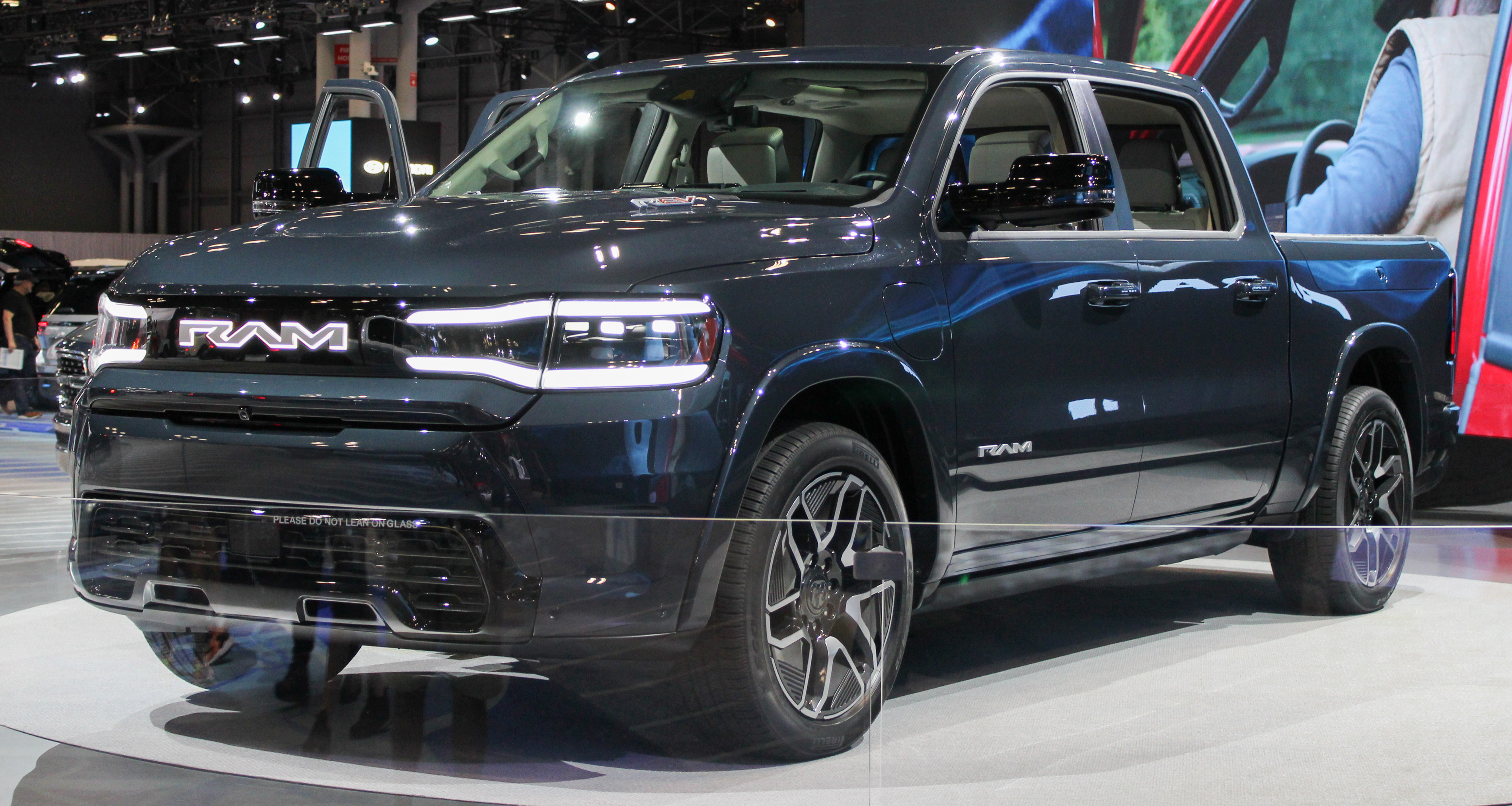
13. **Ram 1500 Rev (2026)**
The full-size truck market is undergoing its own electric transformation, and Ram is stepping into this evolving landscape with the 2026 Ram 1500 Rev, an innovative range-extended electric truck. Formerly known as the Ramcharger, the Rev provides a unique solution that bridges the gap between pure electric and traditional gasoline powertrains, offering the best of both worlds for truck owners who demand versatility and long-haul capability without range anxiety.
The Rev is equipped with a substantial battery pack and two powerful electric motors, delivering an impressive electric-only driving range of 145 miles and a robust 647 horsepower. This means daily commutes and local jobs can often be handled purely on electric power, enjoying quiet operation and instant torque. When the battery charge starts to run low, a V6 engine seamlessly fires up, acting as a generator to replenish the battery and extending the total driving range to a remarkable 690 miles.
This thoughtful design means that when the fuel tank gets low, drivers have the flexibility to either pump more gas or plug in and charge the battery, allowing them to hit the road again with minimal interruption. Such a versatile approach is particularly appealing to truck buyers who often use their vehicles for demanding tasks, including towing. The Rev lives up to Ram’s reputation for capability, boasting an impressive towing capacity of 14,000 pounds, making it a serious contender for heavy-duty work and recreation.
Visually, the Ram 1500 Rev maintains the familiar, rugged aesthetics of a regular Ram 1500, both inside and out, ensuring that truck enthusiasts don’t have to compromise on style or practicality for electrification. This range-extended electric truck is expected to hit the market sometime in 2026, offering a compelling, practical, and highly capable option for those looking to embrace electric power without sacrificing the core utility of a full-size pickup.
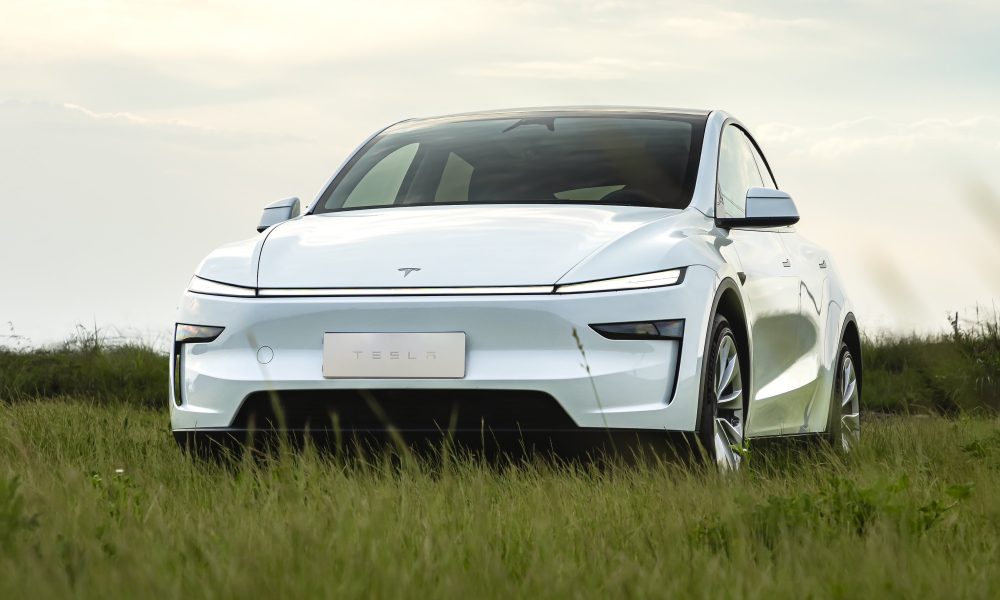
14. **Tesla FSD V14 Lite for HW3 (Q2 2026)**
Tesla owners with older Hardware 3 (HW3) vehicles have reason to be optimistic, as the company confirmed plans during its Q3 2025 earnings call to release a new Full Self-Driving (FSD) update, dubbed “V14 Lite,” in Q2 2026. This commitment from Tesla indicates that despite the introduction of newer Hardware 4 (HW4) vehicles, the company is not abandoning its existing HW3 fleet, a welcome assurance for many long-time FSD subscribers.
However, it’s important to manage expectations, as HW3 vehicles face inherent limitations, particularly in terms of processing power and memory. While HW4 doubled HW3’s memory, Tesla still encounters constraints, and future AI5 computers are planned to have up to nine times the memory of HW4. This means that while V14 Lite aims to deliver “as much of the V14 experience as possible,” it won’t be able to incorporate every feature or the same level of smoothness and reduced video compression seen in the latest HW4 builds.
Despite these hardware constraints, V14 Lite is expected to bring meaningful improvements and new features to HW3 vehicles. These could include enhanced handling of complex scenarios such as construction zones, emergency vehicles, and security gates, thanks to more advanced training data. Owners might also see automatic parking at their destination and new speed profiles. Furthermore, updated UI elements, like the removal of the Autopilot icon and on-screen speed profile switching, are almost a certainty, as they are not tied to hardware performance.
While this update is slated for Q2 2026, Tesla’s historical timelines suggest it might lean towards the latter half of the year, potentially aligning with or even following the release of AI5. For HW3 owners, this means a continued wait, but the promise of a more capable FSD experience, even if it doesn’t match HW4’s full capabilities, will be a significant and appreciated advancement, extending the life and utility of their existing FSD subscriptions.

15. **Tesla Robotaxi Expansion (2025-2026)**
Tesla’s vision for transforming personal transport extends far beyond individual car ownership, culminating in the ambitious rollout of its Robotaxi service. The company’s Q3 2025 earnings call highlighted significant progress and expansion plans, with Robotaxi service areas and fleet counts growing to refine real-world data collection. The introduction of an iOS app for waitlist sign-ups in the US and Canada further indicates a strategic push towards public availability, with an Android app soon to follow.
The progress in Austin, Texas, is particularly noteworthy, with the Robotaxi service area expanding threefold since its launch and continuing to grow rapidly in terms of both ground covered and the number of vehicles deployed. A key objective for Tesla is to remove safety drivers, with the aim of having no person in the car in large parts of Austin by the end of 2025. This bold step underscores Tesla’s confidence in its Full Self-Driving (FSD) technology, which it believes has achieved a “new clarity” and is on track for “FSD Unsupervised soon.”
Tesla’s Robotaxis are designed to seamlessly blend into traffic, a crucial factor in building and increasing public trust in autonomous vehicles. Unlike some competitor autonomy products, Tesla’s vehicles are engineered for autonomy from the ground up, providing a distinct advantage. The goal is to expand into 8-10 metro areas by the end of 2025, contingent on regulatory approvals, with Nevada, Florida, and Arizona targeted for late 2025. The Bay Area, despite over a million miles driven on FSD, still requires a safety driver due to local regulations.
This aggressive expansion and the eventual removal of safety drivers mark a critical inflection point for Tesla, as it prepares to deploy more autonomy into the world. Elon Musk and the Tesla Executive Team firmly believe that FSD and Robotaxi will fundamentally change the nature of transport, offering universal scaling to future cities as regulatory barriers are overcome. It’s a foundational step towards Tesla’s updated mission of achieving “sustainable abundance” through advanced AI and robotics, promising a future where transportation is not only safer but also more efficient and accessible for everyone.
As we look towards 2026 and beyond, the automotive landscape is clearly on the cusp of a revolutionary transformation, far more profound than just incremental improvements. The advancements we’re seeing—from groundbreaking battery technologies like solid-state, which promise to eradicate range anxiety, to accessible electric options making EVs a practical reality for every budget, and the sophisticated leaps in autonomous driving software—collectively paint a picture of a future where personal transport is smarter, cleaner, and more integrated into our digital lives than ever before. This isn’t merely about new cars; it’s about a fundamental reimagining of mobility, bringing us closer to a future of sustainable abundance and truly intelligent vehicles for all.



